Normandy Wellbeing School Trips
Travelbound’s Chateau du Molay in the peaceful Normandy countryside is an ideal base to reflect and enjoy a slower pace of life. There are plenty of opportunities to connect with nature in the extensive grounds or the nearby forests and countryside, and just a short journey away, you can explore wide sandy beaches, fishing ports and small seaside resorts.
Local markets offer a variety of healthy produce. Stroll around the apple orchards where age-old agricultural traditions include apple juice, cider and calvados. Stroke the goats and taste their cheese at a family-owned goat’s cheese farm. Meditate in the vast medieval space of Bayeux cathedral or take your own bare-foot pilgrimage journey across the Bay to the breathtaking Mont St Michel.
Take part in creative on-site activities at the Chateau du Molay and enjoy team-building tasks to build confidence and resilience. The region also has a multitude of off-site activities to enjoy, including High ropes, Sand yachting, the Normandy Luge, Paddle Boarding and canoeing.
Our Normandy Wellbeing school trips offer a fantastic range of possibilities to get active or relax in this beautiful region steeped in nature, tradition, History and Art.
Highlights of Normandy Wellbeing school trips
Walk barefoot across the Bay of Mont St Michel
Stroke the goats and enjoy their delicious cheese
Get active on the beach with a sand yacht lesson
Explore medieval Bayeux, the produce market & the Cathedral
Maidstone Grammar School for GirlsA unique experience that our students will never forget! Travelbound was instrumental to the success of our Normandy visit. The Chateau du Molay is such a lovely place!
Suggested itinerary
What's included*
*Please note, entrance fees where applicable are not included in typical price – contact us for more details
Recommended excursions
Mont Saint-Michel, a gothic Benedictine abbey, is perched on a rocky islet amid vast sandbanks exposed to powerful tides. Over the years the island’s abbey has served as a prison, a fortress against the English and a monastery. As well as the abbey, your group can explore the medieval buildings of the village that grew up beneath its walls, along with stunning views.
Follow in the footsteps of early pilgrims as you take a guided barefoot walk across the stunning Bay of Mont St Michel. Immerse yourselves in the tranquil beauty of this spectacular landscape as you make your way to the UNESCO World Heritage site of Mont St Michel.
Visit the medieval town of Bayeux with its magnificent Romanesque and Gothic cathedral. The original building was completed during the reign of William the Conqueror. Enjoy the gentle pace of life as you walk around this beautiful provincial town with its half-timbered buildings and local produce markets on Wednesdays and Saturdays.
Visit the Cerisy Forest close to Le Molay Littry and introduce students to the fauna and flora of this local nature reserve. The students will be led to discover forest life in a fun and educational way by completing a treasure hunt-type activity based on the trees and animals found in this wide space spreading over 2000 hectares. The activity can be led in either French or English.
This vast unspoilt tranquil wetland regional park is home to numerous plant and animal species. A good way to discover the nature of the marshes is on a boat trip, available from April to early October. There are many walking trails for visitors to explore, ranging from 1 to 7 km, each with its own unique features. The Discovery Centre in Carentan-les-Marais explains the history of the region and regularly holds exhibitions to raise awareness about climate change and eco-citizenship.
This picturesque seaside town of half-timbered houses and cobbled streets was once an important departure point for maritime expeditions. Great Impressionist painters have captured its 17th century harbour. It also boasts the nearby huge cable-stayed bridge, the Pont de Normandie. A 16-stop audio city walk that takes about 1.5 hours is available at the tourist office.
Founded in 1868 by the Honfleur artist Alexandre Dubourg, a friend of Eugene Boudin, the museum shows works by 19th century artists inspired by this region of Normandy. There are works by Romantics, Impressionists and Fauves, including Boudin, Monet, Courbet, Jongkind, Cals, Dubourg, Isabey, Vallotton, Dufy and Marquet.
This modern museum built inside William the Conqueror’s Castle contains works from the 15th century to the contemporary period. The Museum specialises in 16th and 17th century European painting including works by Veronese, Tintoretto and Rubens. Normandy as the home of Impressionism is represented through works by Monet, Boudin and Lebourg and post impressionism works by Bonnard and Dufy.
Students visit a local French market, bursting with delicious produce. Teams complete an Assignment to buy a variety of food items using their French language skills. The items will be used for a food-based activity on their return to the Chateau.
This working goat farm allows students to see how dairy products such as milk and cheese are produced. Students can play with the goats and learn about the cheese-making process. It’s a great way to find out more about the traditional produce of the area and also presents a good chance to practice language skills and develop vocabulary. The visit includes a short educational film, a talk and a cheese tasting. Visit can be conducted in French or English.
On the list of things to do in France, trying new foods is near the top. After a long day, the students and staff can opt for a tasting session of snails (escargots) and mussels (moules) before the evening meal. This gives the adventurous students a chance to taste traditional French delicacies.
A must-do for any visitor to Normandy with a sense of adventure and appetite for local delicacies, a trip to the Odon Snail Farm offers an opportunity to discover the uniquely French tradition of snail farming from field to fork. A guide will walk you through each area of the farm, from the workshop and parks to the laboratory, before offering your group a chance to taste the escargots for yourselves.
Enjoy a guided visit of Normandy Alpacas, an educational farm and the largest alpaca farm in Normandy. The guide will offer insights into the life of the alpacas and other animals. There are several breeds of donkey together with miniature horses and goats. Students will have the opportunity to pet the animals.
Interesting vestiges of D-Day and the Battle of Normandy can be seen on the farm, including the site of the main bakery which supplied bread to the troops. The on-site barn can be used for packed lunches.
A trip to a traditional French bakery lets pupils learn about the complete process of bread making. Students can actively participate and eat in or take away what they help to create. This tour is worthwhile just for the smell alone, but there are also great opportunities to ask the baker some questions in French.
Available April until early July, September and October.
On a visit to the oyster beds in Normandy, students can try what may be their first taste of oyster and observe farming and fishing techniques along the coast. The trip is a chance to compare and contrast the industries of the land against those of the sea, and educate the palate.
Tip: ‘Special’ oysters are the meatiest, while ‘fine’ have less meat.
Take a fascinating trip to a working apple farm that makes apple juice, cider, and the famous Calvados. An interesting talk and tour enables students to appreciate what it takes to get juice from the blossom to the glass. See what goes on in the cellar, the orchard and the apple processing plant. The pretty rural setting makes this a relaxing and fun excursion.
The Normandy American Cemetery and Memorial covers 172.5 acres and contains the graves of 9,387 military dead, most of whom lost their lives in the D-Day landings and ensuing operations. The memorial, set around a bronze statue, shows maps and narratives of the military operations. Visitors’ centre staff are available to answer students’ questions.
The British Normandy Memorial officially opened on the 6th of June 2021 as a place for remembrance and reflection.
Overlooking Gold Beach, just outside Ver- sur- Mer, the Memorial records the names of 22,442 servicemen and women, under British command, who fell on D- Day and during the Battle of Normandy.
A series of stone carved columns bear the names with the ‘D-Day Sculpture’ a set of bronze figures by British sculptor David Williams-Ellis, occupying a prominent position.
The site also includes a French Memorial, dedicated to the memory of French civilians who died during this time.
You can choose from a range of fun and educational activities, and experienced chateau staff are on hand to ensure that the students are having fun all day and night. Available activities include: a blind trail walk, survival skills, initiative exercises, using various sports facilities for sporting games (such as the seasonal outdoor swimming pool), planting a tree and circus frenzy to name a few.
A range of off-site activities are available in the region including guided beach walk, Sand yachting, Canoe and Stand Up Paddle Board, High ropes, Normandy Luge and The Bayeux Adventure Park.
This outdoor adventure park, located in Cussy, close to Bayeux offers a wide range of activities for students. The Activity Pass includes high ropes courses, mini-golf, tubing, permanent wooden maze and maize maze (seasonal), fixed track zorbing (over 12’s), peddle karting, bubble football and more! There is an on-site café and picnic area. Open April to Sep/October (on request for school groups outside of public opening times).
Set in a panoramic valley by the Souleuvre Viaduct (built by Gustave Eiffel), the Normandy Luge is a thrilling adventure ride. The one-kilometre ride down the steep side of the valley twists and turns its way reaching speeds of up to 45kms an hour.
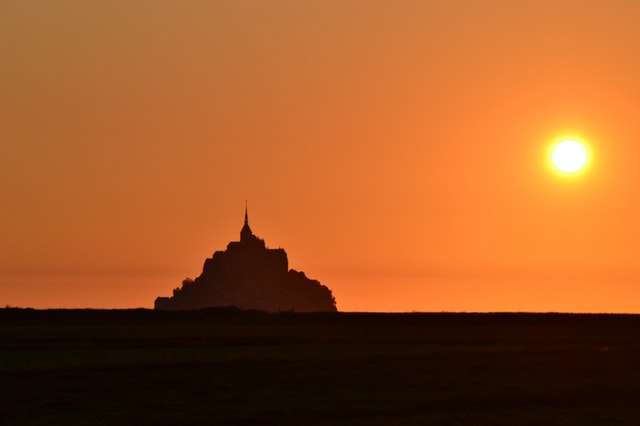
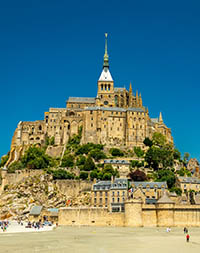
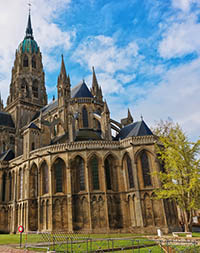

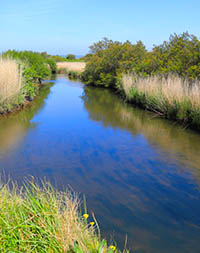





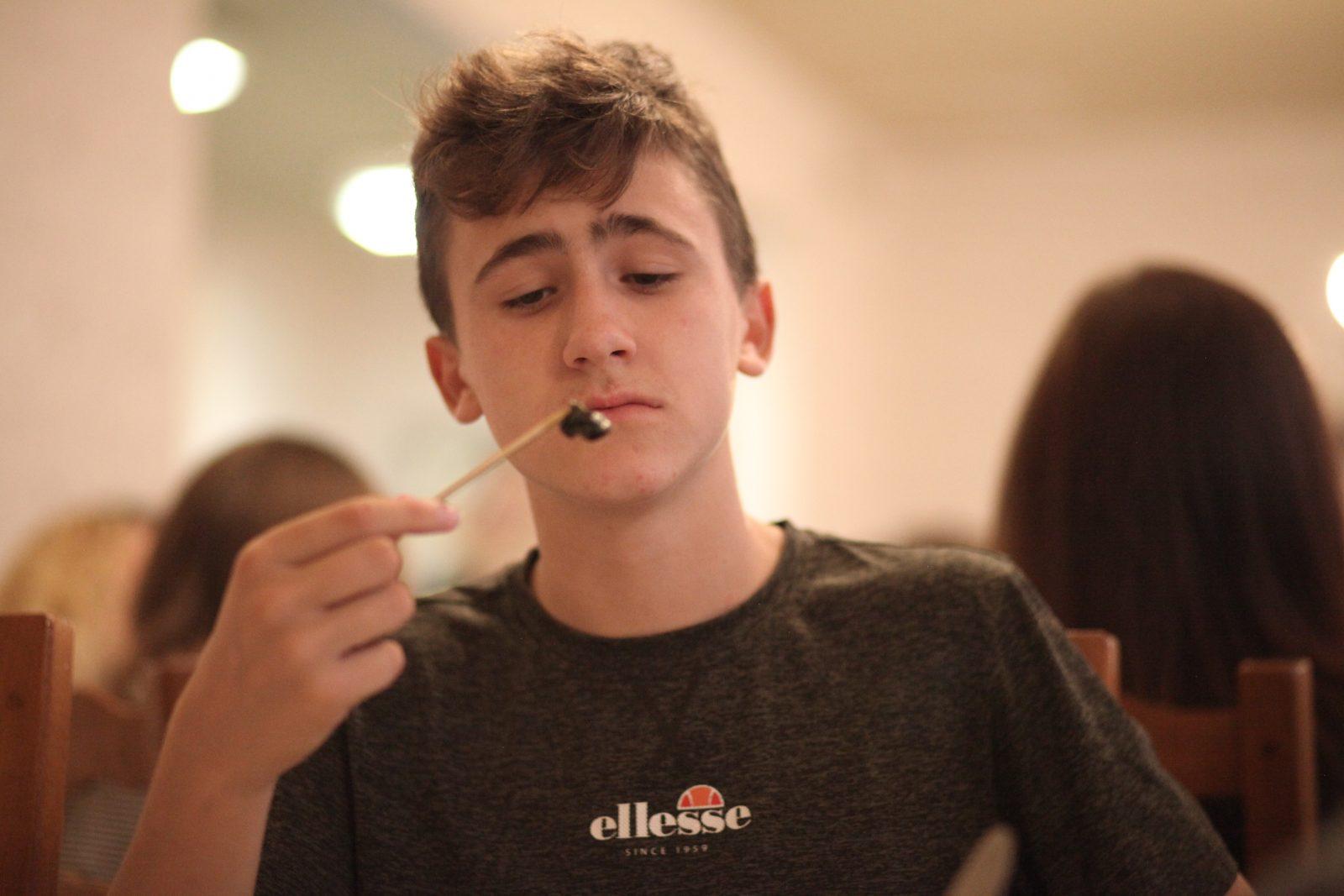
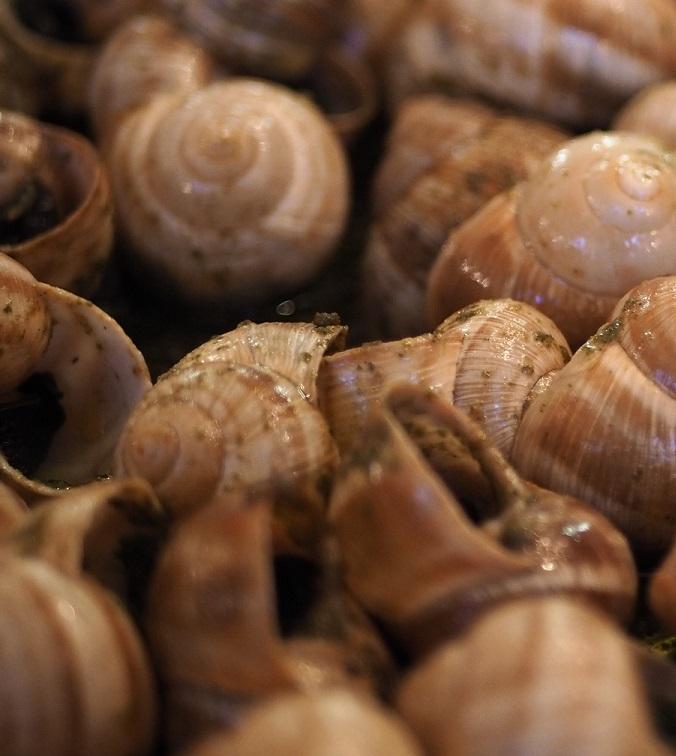

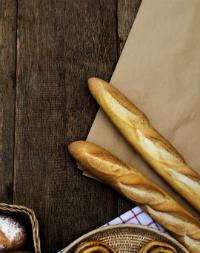
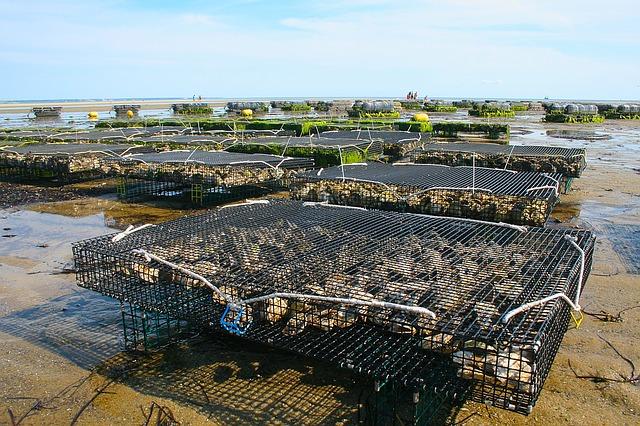
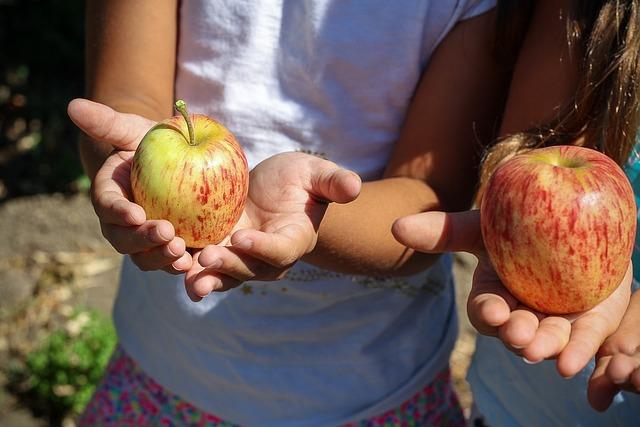
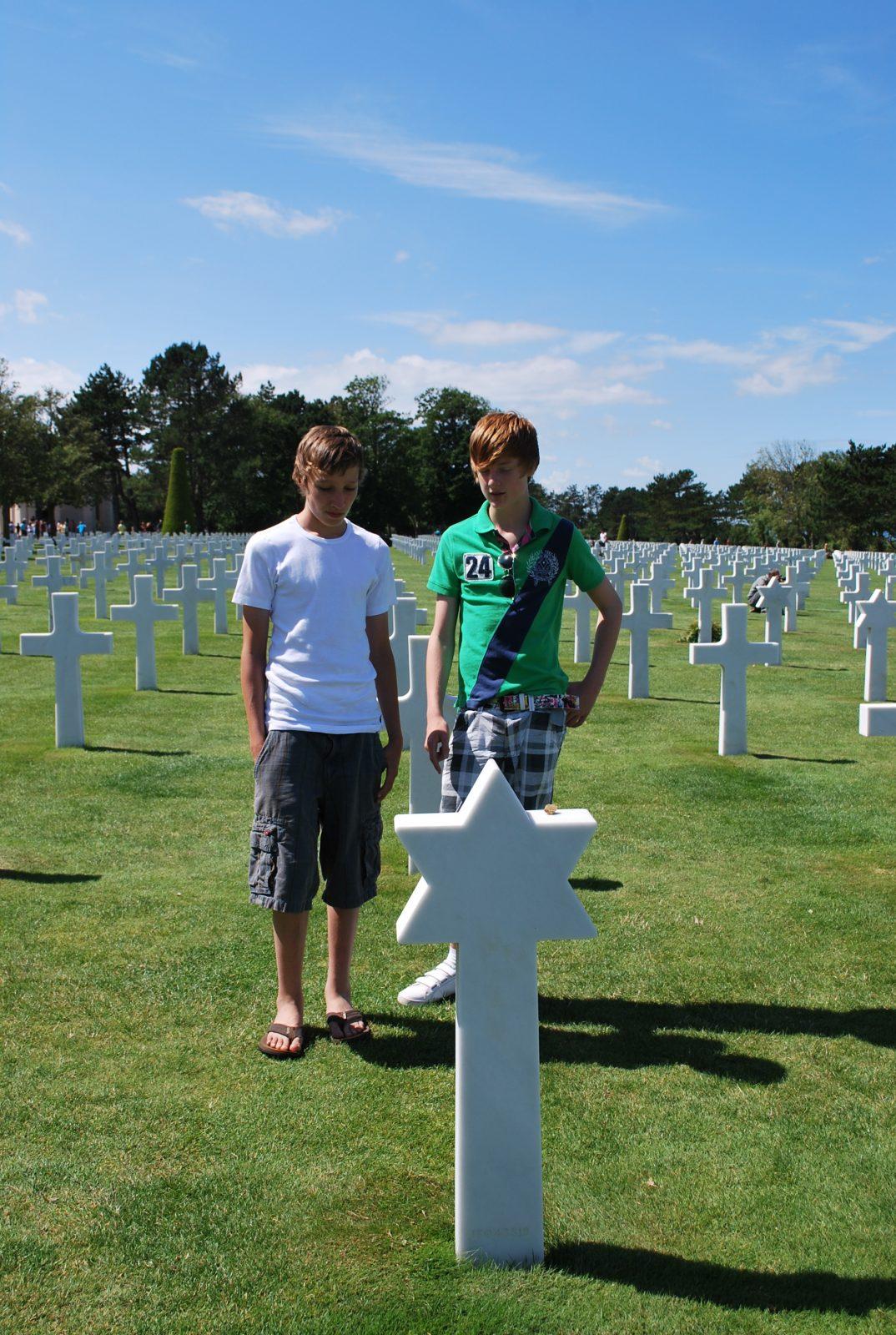

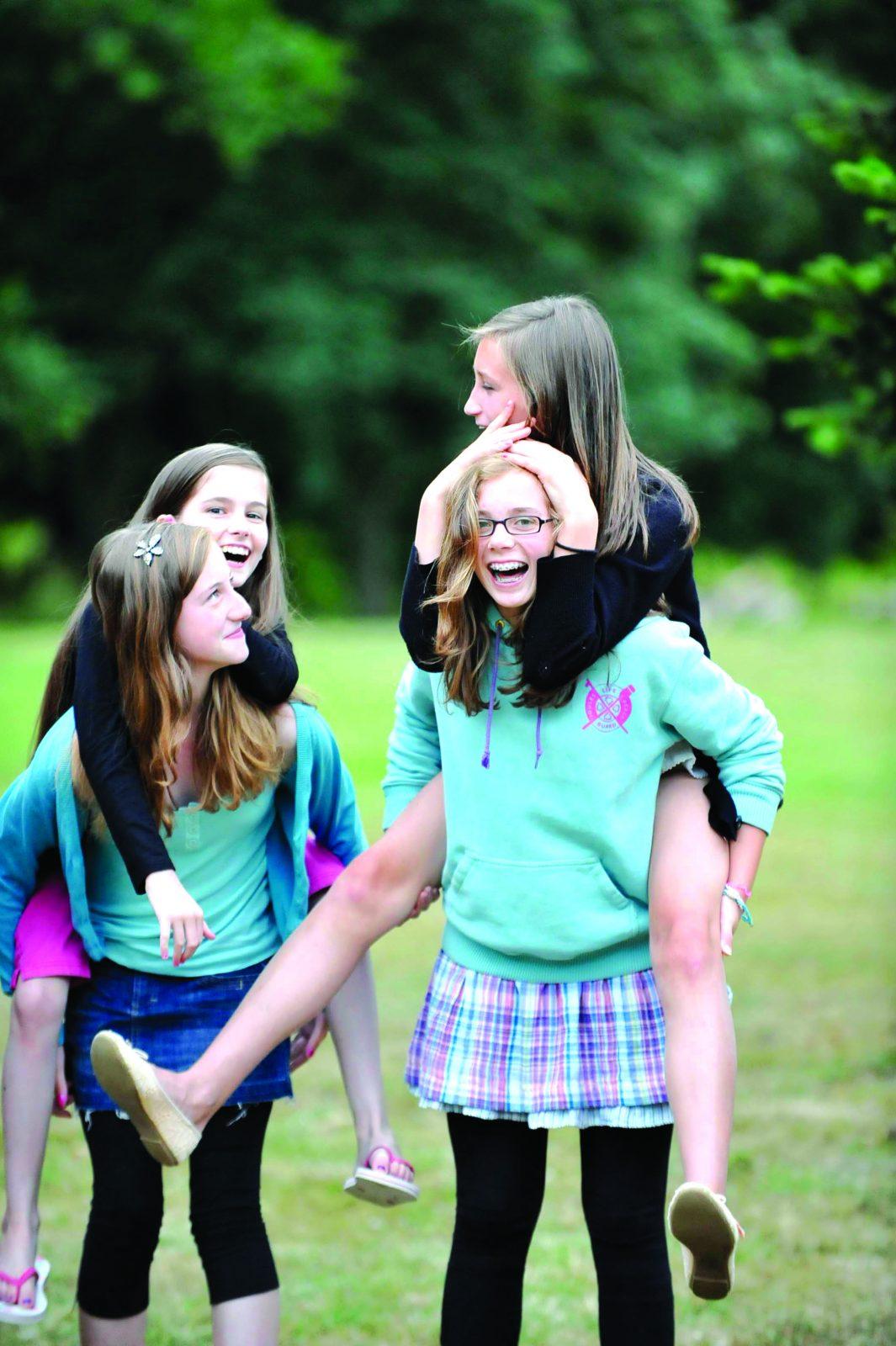

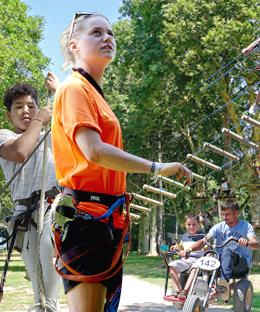
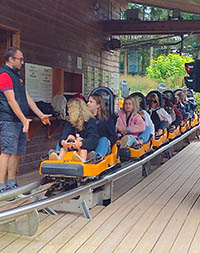
Learning outcomes
Subject focus
Students can:
Have time to reflect and enjoy new experiences connecting with nature
- Experience learning outside the classroom in another country
- Build confidence and resilience and learn to value the skills and techniques needed for personal and team success
- Broaden the mind through the study of another culture, its food and language.
- Discover, explore and have fun with fellow students and teachers
- Student outcomes
Student Outcomes
Students will have had an opportunity to:
- Visit a foreign country and experience another language and culture
- Gain independence and self-confidence
- Strengthen existing friendships and make new friends
- Understand more about history (World War II and the Norman Conquest)
- Learn about the countryside and local produce
- Try new activities and have fun
- Strengthen existing friendships and make new friends
- Test and challenge their own abilities


